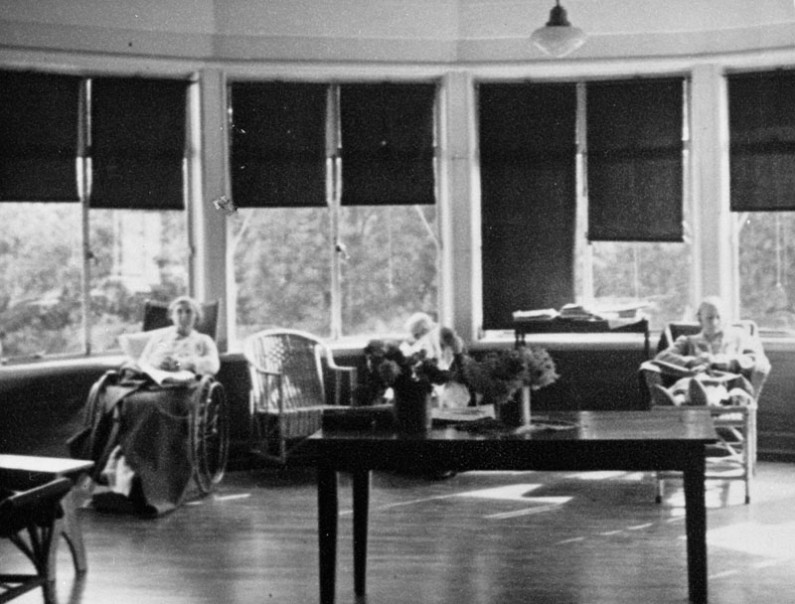The history of Waikato Hospital part 2
An Old Men's Refuge

Lounge in Ward 18 at Waikato Hospital c. 1948
The Inspector General reported in 1887 that there was a need for the board to build a refuge for old people at Waikato Hospital.
In the 1880s and 1890s there was an increasing demand for old age welfare services due to the ageing of what was a young settlement population. The New Zealand Planning Council's 1979 report on social welfare identified that the elderly made up a large section of the poor between 1880 - 1920. Those who didn't have the help of family and friends relied heavily on support on the community and government.1 Refuges and other institutions became responsible for housing the elderly but they were often grim and uncomfortable places. Those who suffered from dementia were sent to mental institutions. 2
Due to a few factors, men were more of an issue than women. The colony had a gender imbalance as there were more single male immigrants who never married. Men were also less likely to able care for themselves or have family and friends willingly to take them in. A 1929 Waikato Times article wrote -
"Of course if we were as civilised and humane as the Chinese, there would be very few to go into old men's homes for in China some distant relative will practically always find a place in his home for the white-haired clan. If we only took time to think, there might be some way we outsiders could bring a little more sunshine to those in the winter of life." 3
At Waikato Hospital, in return for their keep, the able-bodied men were expected to work in the orchard and vegetable garden. When there was a problem with the windmill powered water pump which supplied the hospital, the men were instructed to do the pumping. Shirkers were not welcome to stay at the refuge. One resident received a letter from the hospital boards secretary stating -
"I must request you to take your share of the work of the Refuge and unless you do so I shall have to report you to the Board. The fact of the Board receiving the amount of your pension does not mean that you are to be kept in idleness. You can leave the institution and support yourself outside if you like, but while you are an inmate you must observe the rules." 4
By the 20th century rest homes started to become a more attractive option. Some were established specifically for returning soldiers. After the war, women outnumbered men and New Zealand had one of the largest rates of rest home residency in the western world. 5
